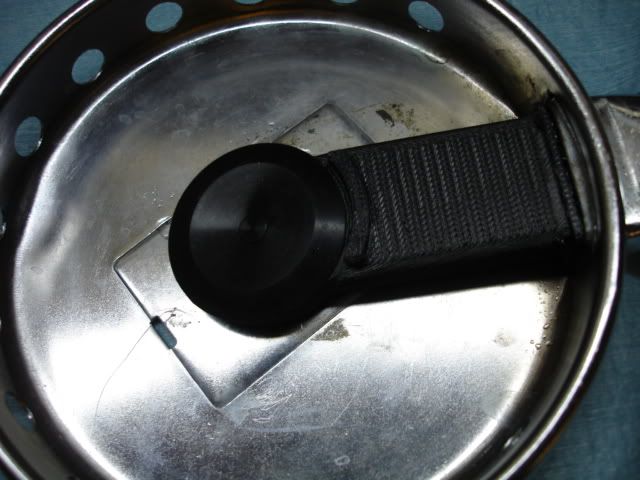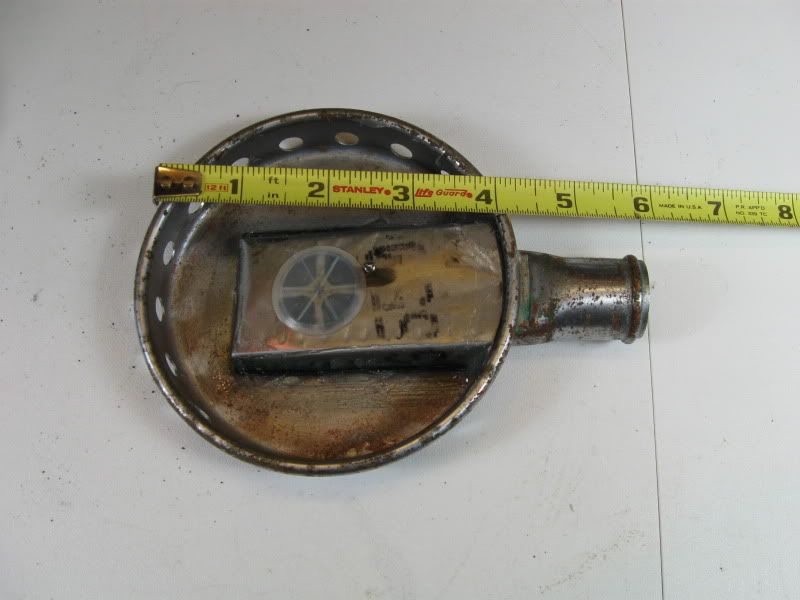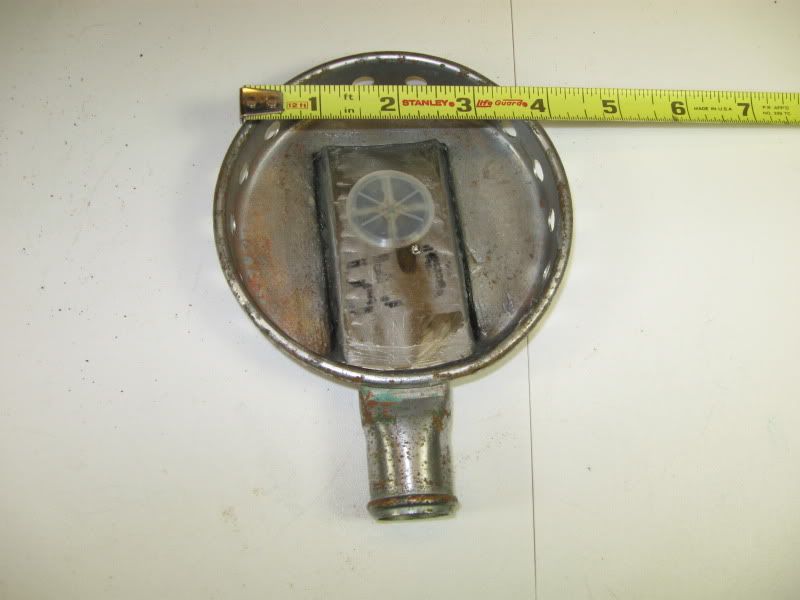Page 1 of 5
Duckbill Eliminator
Posted: Sat Jan 02, 2010 8:27 pm
by Bryan
For those of you who don't want to bother with a duckbill for your USD and Voit regulators there is an option on the horizon.
This comes from the high tech R&D department at VDH.....Ok it really came together in the parking lot of Alexander Springs on a scrap piece of paper between Rob Sewell, Allan and I.
Very simple design, no modifications to your regulator and installs with 1 bead and one dime sized drop of silicone adhesive.
This is the one working prototype and it works FANTASTIC! Rob and I dove with it today and we are both very pleased with how it performs.
My goal is to have it out the door to the customer at $20-25 with a spare valve. I need time to get a umbrella valve designed specifically for it and do some pricing on the whole thing. Enjoy!!!
 SEE MORE PICTURES HERE
SEE MORE PICTURES HERE
Re: Duckbill Eliminator
Posted: Sat Jan 02, 2010 8:33 pm
by 1969ivan1
Wow! The Duckbill futures market just crashed! That is a very nice design. The price is crazy low! I recall not so long ago before VDH arrived when somebody was selling old rubber duckbills for 50 bucks each! I can see all my USD regs beign retrofitted with the DUCKBILL killer! Any plans on a version for the FX?????
Re: Duckbill Eliminator
Posted: Sat Jan 02, 2010 9:58 pm
by usddude
AWESOME!!!!


I would like to get in on these. I want to buy at least 6 of them spread out over a couple of month buying period!!! I never have paid fifty bucks for an old duckbill like Rob said....sorry I missed out on that

usd
Re: Duckbill Eliminator
Posted: Sat Jan 02, 2010 11:07 pm
by JES
Bryan & Rob Sewell dove this at Ginnie Springs today and it looks even better in person. They really put it through it's paces today and it performed with flying colors.

You can count me in as a buyer.
Re: Duckbill Eliminator
Posted: Sat Jan 02, 2010 11:19 pm
by luis
I can't wait to replace all my duckbills.
That looks like a very clean and simple retrofit.
Re: Duckbill Eliminator
Posted: Sun Jan 03, 2010 1:22 am
by Herman
Nice, I'm in for a couple.
Re: Duckbill Eliminator
Posted: Sun Jan 03, 2010 3:02 am
by SeaHuntJerry
Wow!!
Hats off to the brillant engineer or engineers of this great idea.
MIke Nelson would be proud!!!!!!!!!!
JL

Re: Duckbill Eliminator
Posted: Sun Jan 03, 2010 3:54 am
by seakrakken

Brilliant!
Re: Duckbill Eliminator
Posted: Sun Jan 03, 2010 6:12 am
by scaph

that's a great idea (it remembers me something...

) but I'm not convinced...
Is it just glued around the horn ? Hmmm...
The size of the valve seems to be quite small (better than some others regs however)....
As we say in France...I only believe in what I see...or try

so I think I will buy one just to try
Re: Duckbill Eliminator
Posted: Sun Jan 03, 2010 9:23 am
by Bryan
Couple of points....The valve is roughly the same size as the ones in the mouthpiece and we didn't think there was any benefit to making it larger since you can't flow any more air though it than can pass through the mouthpiece valve.
As a test to how securely the silicone held it in the can I put a string around it and suspended a 1.5lb weight from it and it held but when I put another 1.5lb weight it started to pull loose. So I guess if the Kraken got one of it's tentacles in the can it might come loose but I can't figure any other way. If you really really wanted to make it permanent in the can you could use a 2 part epoxy but I can't guarantee that it could be removed in one piece.....
Rob and Ron both observed that the valve is almost directly centered over the main diaphragm and that should allow you "Super Tuners" to get your cracking effort as low as possible.
Eric, I just adhered the sample in the top of my Spiro can and I'll be diving with it next !
Re: Duckbill Eliminator
Posted: Sun Jan 03, 2010 9:31 am
by capn_tucker
Awesome! Can't wait to install these on all my Voits. Duckbills begone!

Re: Duckbill Eliminator
Posted: Sun Jan 03, 2010 10:01 am
by Gilldiver
There are a few sealants that we use on aircraft that would work well for this application.
The first is a poly sulfide sealant per MIL-S-8802 (now MIL-PRF-8802) or AMS 3265. These are black to grey in color and come in 3 viscosities, a Class B, which is the medium viscosity, would do well. One manufacturer is PRC-DeSoto and the material I would use is PR-1440 B-1/2 or B-2.
The number after the B is the working life in hours to apply the sealant B-1/2 is 30 minutes, B-2 is 2 hours. Another manufacturer of a similar product is AC Tech, their AMS 3265 B-1/2 can be forced cured hard in less then 40 minutes at 130F. The sealant cures to a hard rubber like consistency. This stuff is like a bad case of the clap in a cheap whore house on all aircraft – its everywhere on just about everything that needs to be sealed.
The second is a polyurethane fuel tank sealant made Engineered Fabrics Corp in Ga. The sealant is EFC-1000 and is a 2 part mix but it has a good bit of toluene in it and I don't know what plastics your duckbill replacement is made out of. But this is real good stuff and is used to fix wing fuel tanks on all types of aircraft and has very good flexibility (180 degree bends are not a problem) at normal aircraft temps (-35F - 130F).
Re: Duckbill Eliminator
Posted: Sun Jan 03, 2010 12:04 pm
by Ron
Like Bryan said, I think this could lead to the lowest cracking pressure in a regulator ever. It will be very interesting to dive it and see how it works from a tech perspective. I imagine that exhalation effort will be reduced as well.
Re: Duckbill Eliminator
Posted: Mon Jan 04, 2010 2:24 am
by seakrakken
I might try simple 3M automotive trim and weatherstrip adhesive. Its really good. (and cheap!)
Re: Duckbill Eliminator
Posted: Mon Jan 04, 2010 9:23 pm
by luis
scaph wrote:
The size of the valve seems to be quite small (better than some others regs however)....
As Bryan mentioned, there is no need to make the valve any larger than the mouthpiece valves.
It would actually be counter productive to make it any larger than absolutely necessary. A larger valve will not reduce the flow resistance, but will allow a free flow if the regulator is fine tuned.
A one inch diameter valve means that the lowest cracking suction that the regulator can be adjusted to is ½ inWC (half of the diameter). It actually has to be a bit higher to account for the distance from the valve to the diaphragm.
Below are some pictures of an early experiment/ prototype made by Allan.
I have tested the flow resistance from the prototype and the resistance is below what my Magnehelic can measure. The flow resistance was very close to zero. The duckbill on the other hand has a low but very measureable flow resistance.
Rob Sewell design is much neater and easier retrofit, but the function and performance should be the same.
BTW, Allan is a great craftsman… the prototype was intended to be functional and obviously no effort was spent on the looks…




I am really looking forward to this new duckbill replacement.

I hate duckbills… not as much as the little C-clips… but I still hate them. I just cleaned an old duckbill…

BTW, I like the texture of that 3D plastic printer. That is some neat stuff.




